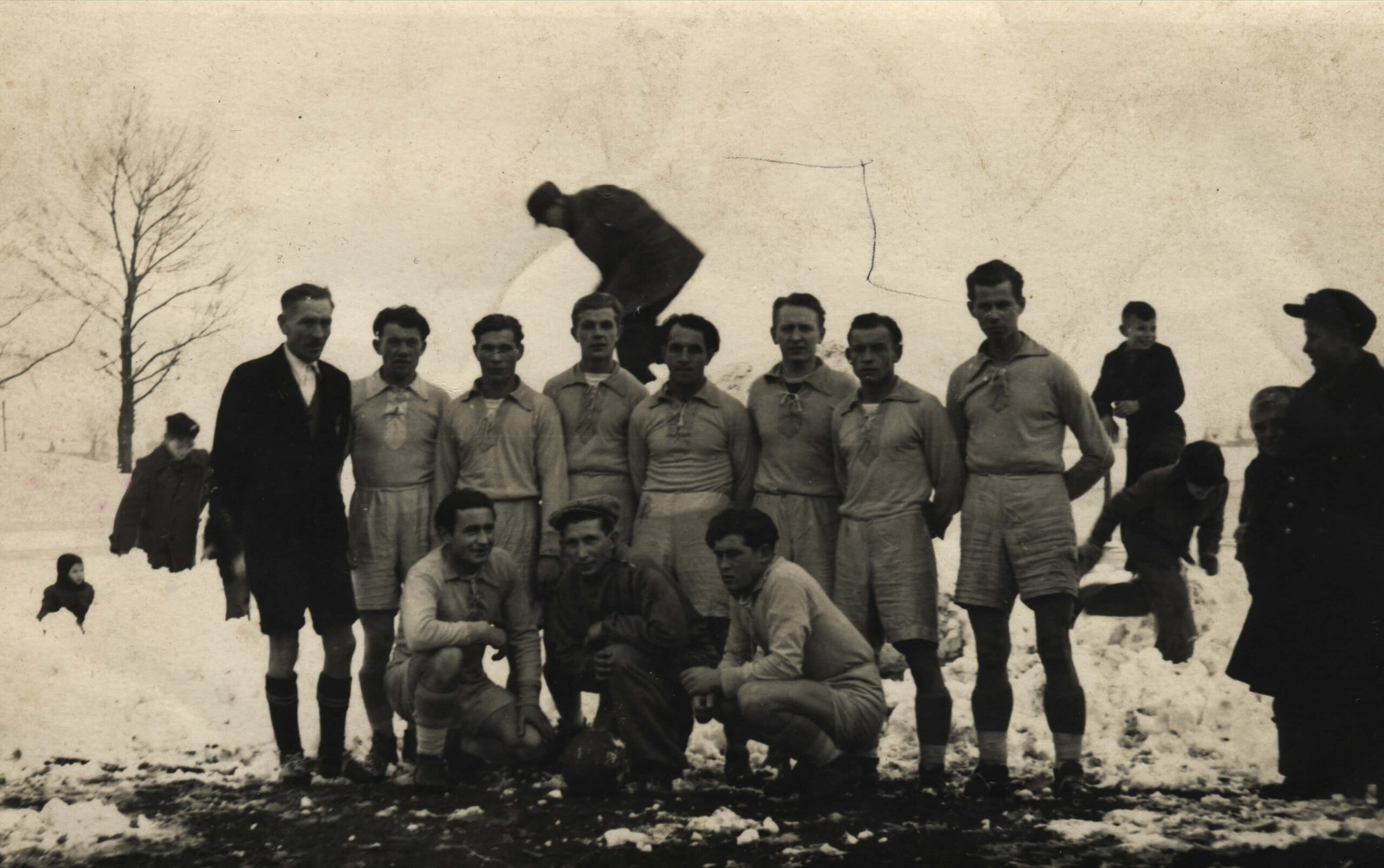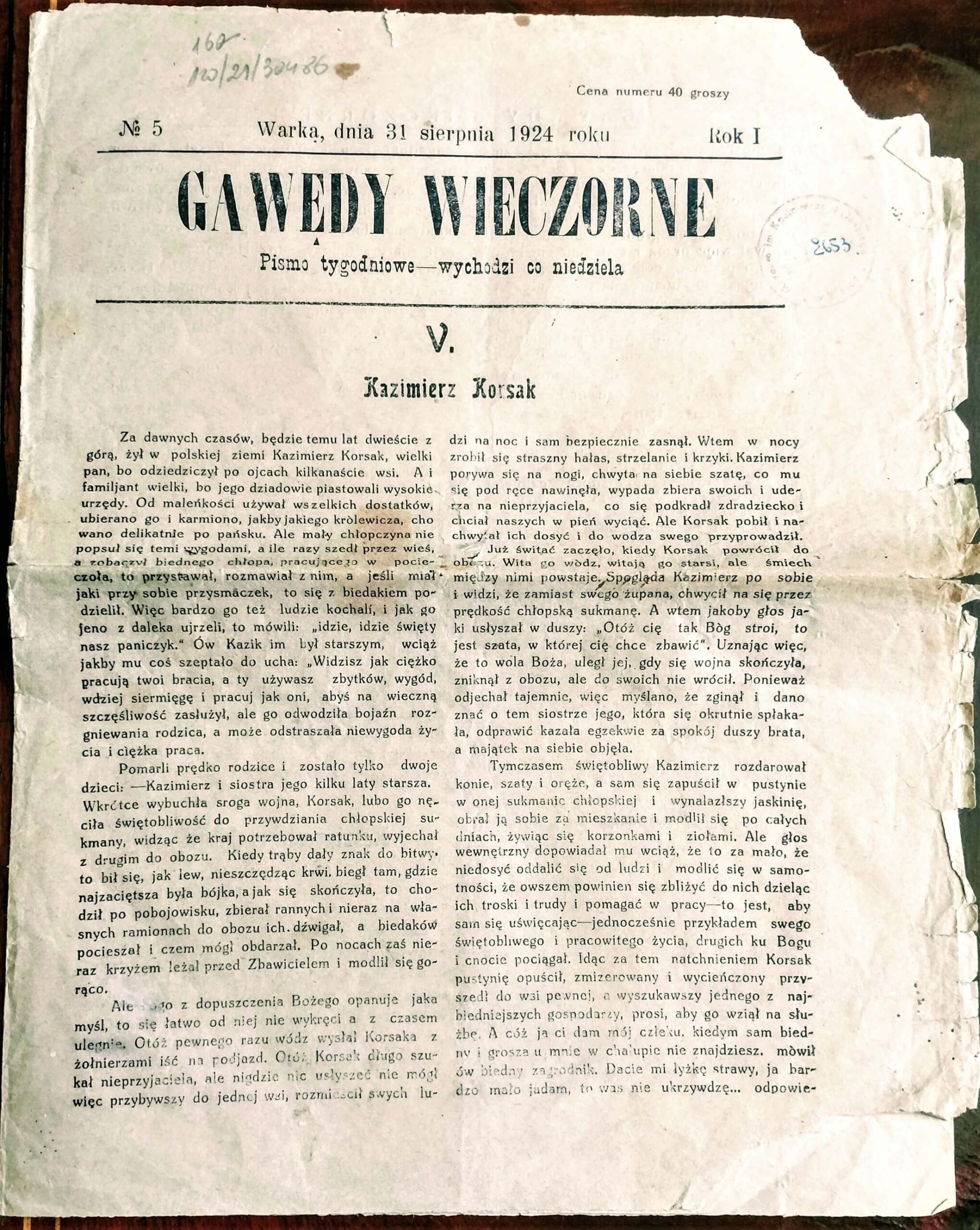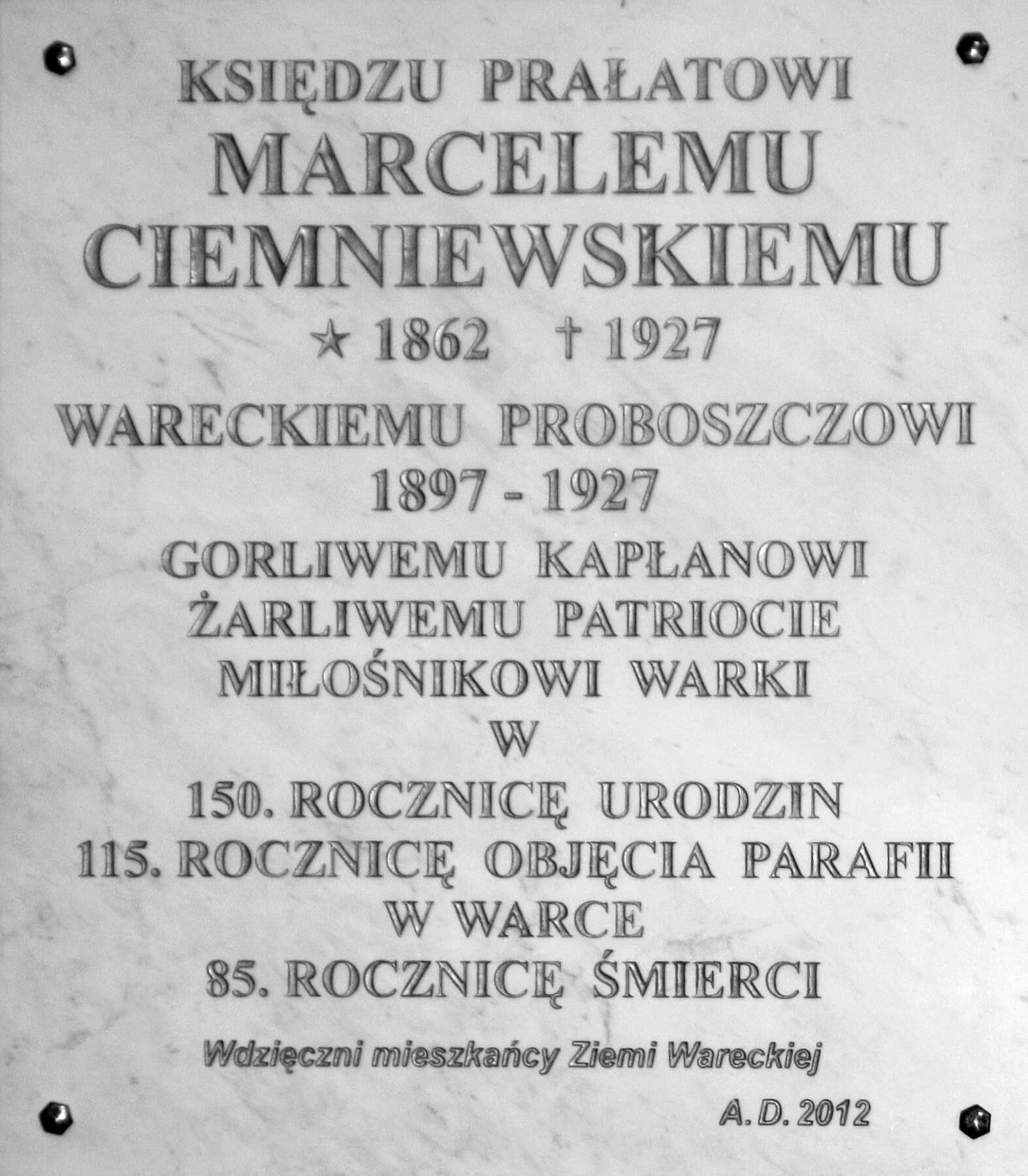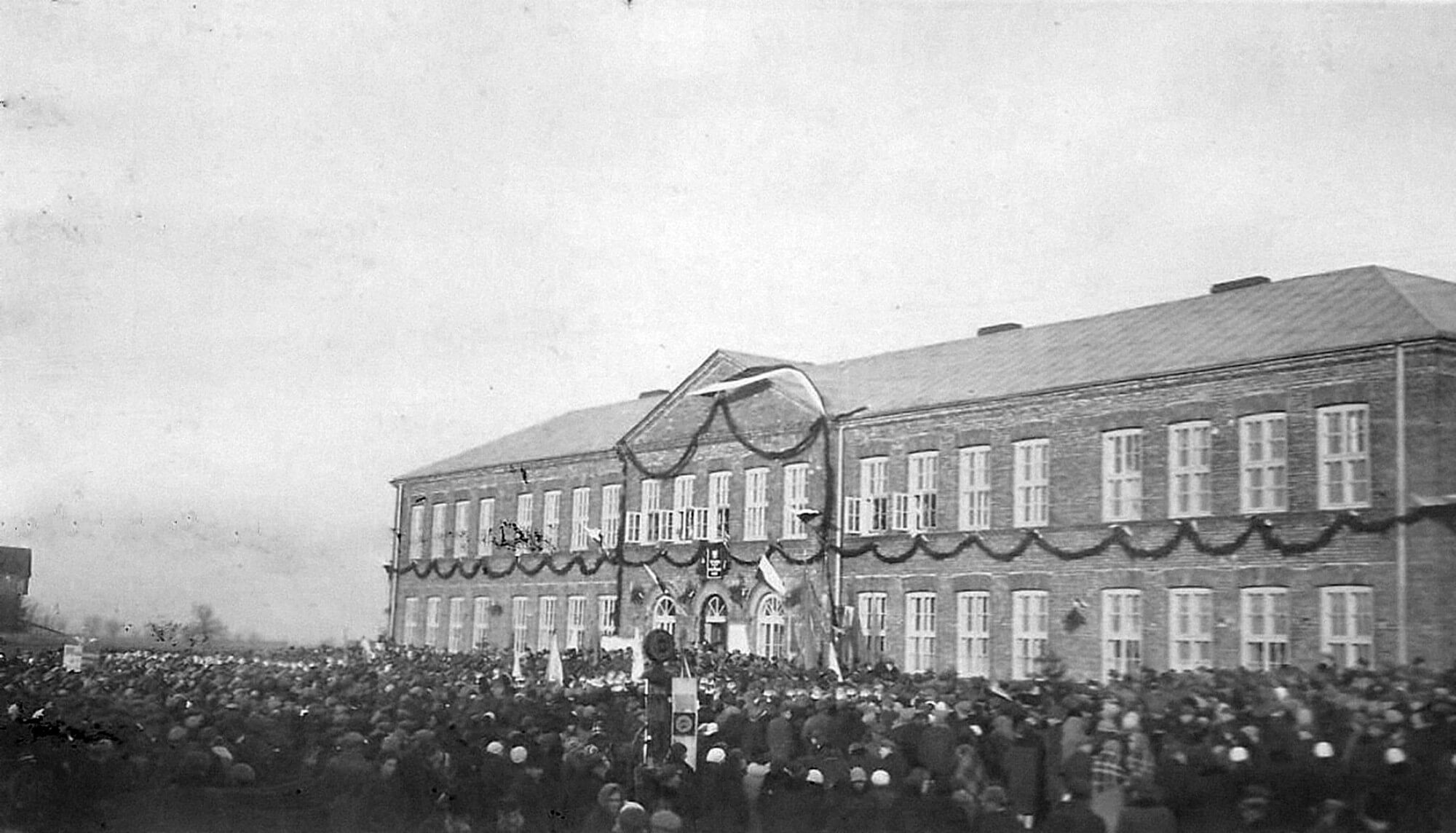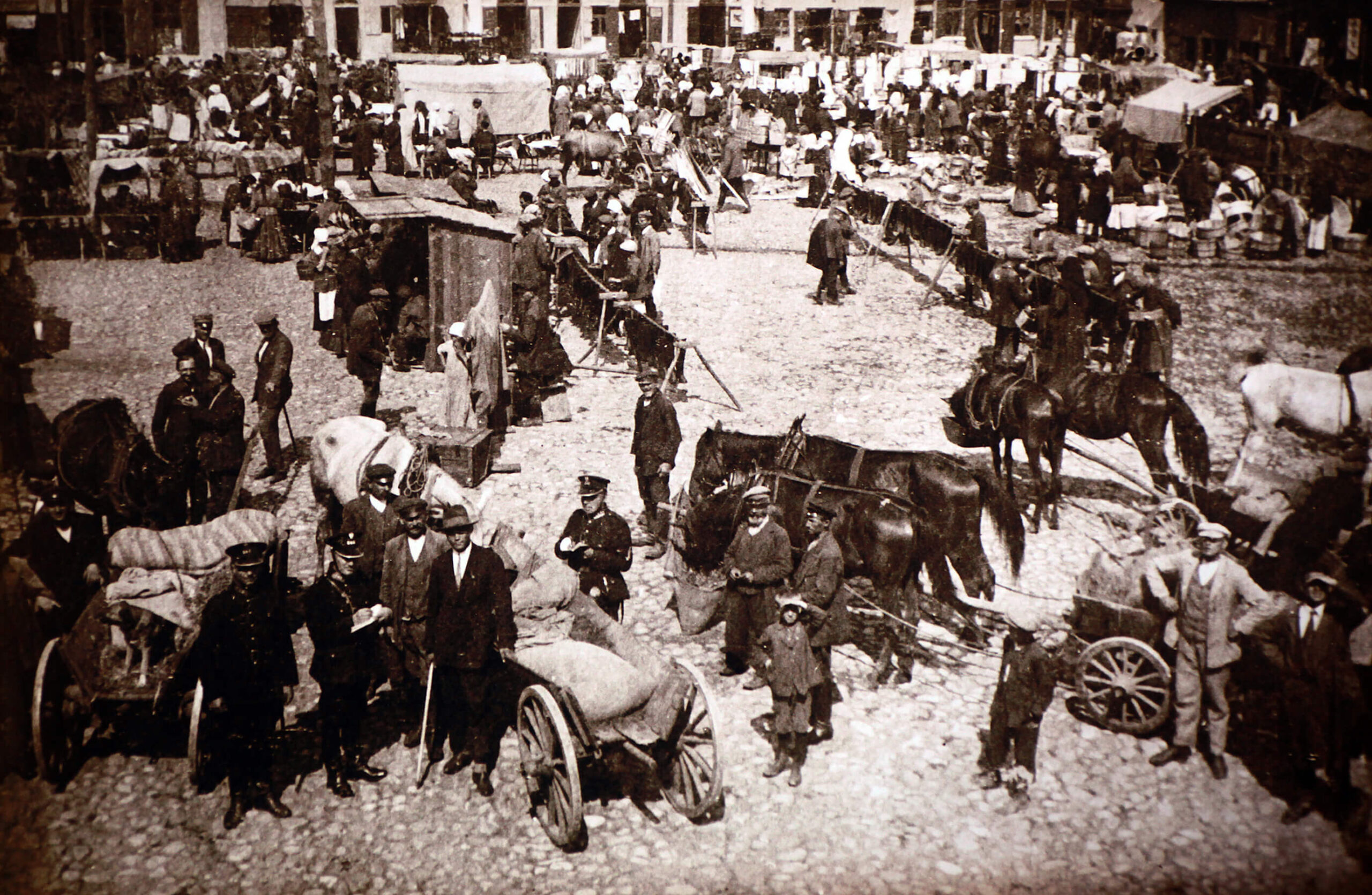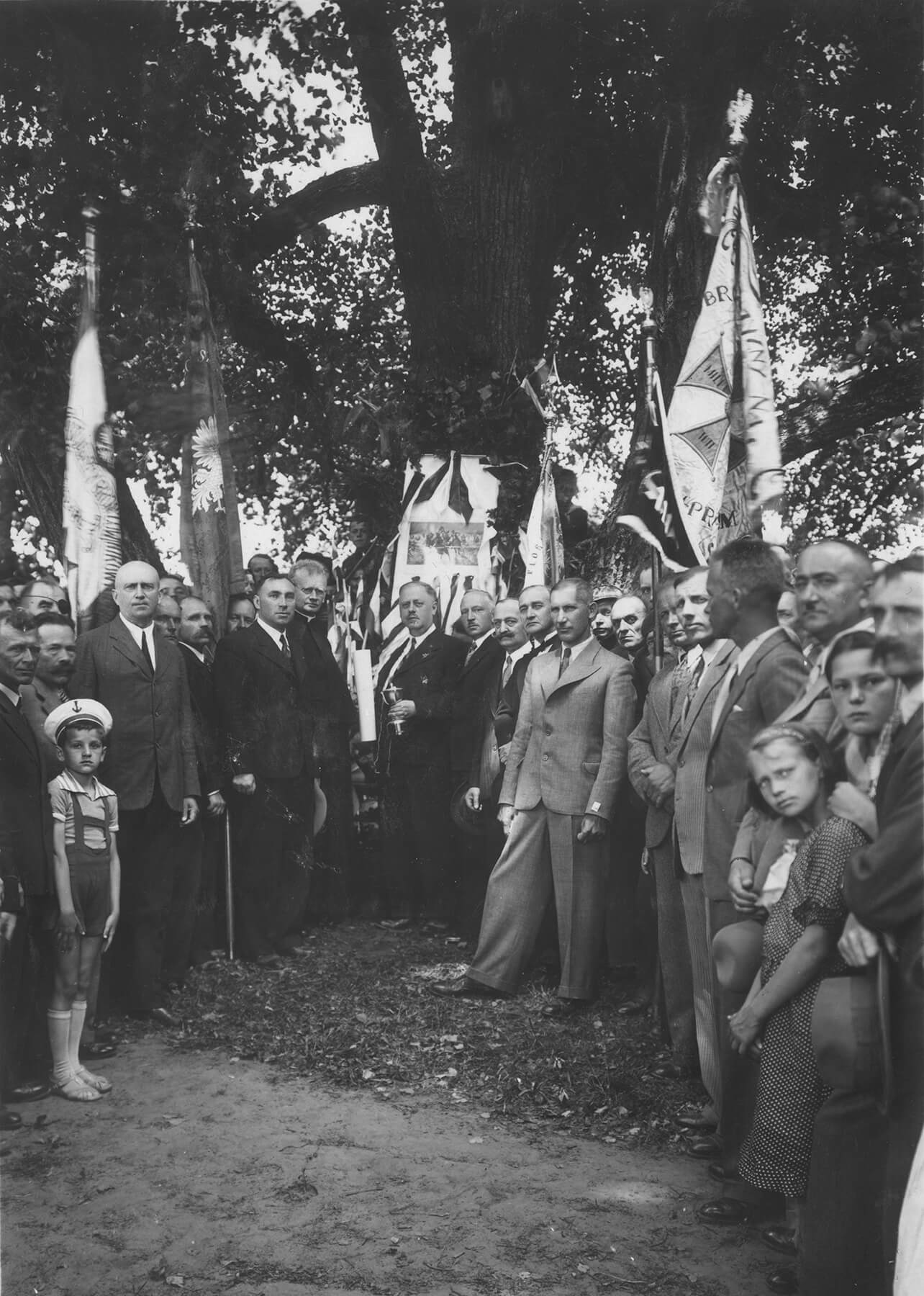x
CHRONOLOGY
THE SECOND POLISH REPUBLIC
1918
Edward Twardowski takes over as Warka Mayor.
1920
The State Civil Defense Committee (Obywatelski Komitet Obrony Państwa) is established in town.
1921
Warka has 4,306 residents and 304 houses.
1922
Nuncio Lorenzo Lauri visits Warka, holding services in the post-Franciscan and parish churches.
1923
A sports club called KS Warka is called into existence.
1924 – 1925
The first issue of a local magazine entitled “Gawędy Wieczorne” (“Evening Stories”) comes out. Likewise, Fr. Marceli Ciemniewski publishes the “History of the Town of Warka” (“Dzieje Miasta Warki”).
1927
Warka Town Council passes a resolution to construct a new school building on the square at Warszawska Street; construction works commence.
Warka has 4,306 residents and 304 houses.
Fr. Marceli Ciemniewski passes away. Fr. Ciemniewski was Warka parish priest, Warsaw canon, author for the Catholic press, editor of the local weekly “Gawędy Wieczorne”, and author of the town monograph.
1930
Ceremonies of opening the new elementary school building in Warka take place as part of the centennial celebrations of the November Uprising.
1931
The state authorities abolish the office of mayor, dissolve the Town Council of Warka, and introduce supervised management of the Town by a state commissioner and his privy council.
1933
A roadway from Warka to Kozienice (25 miles south-east of Warka) is built.
1934
A grand opening of the Warsaw-Warka-Radom railway line takes place; the railway line forms part of the Warsaw-Kraków trunk line. The event constituted an essential step in the Town’s development. Warka has a railway bridge.
Former state commissioner Col. Józef Pączkowski becomes Mayor; the Town Council is restored.
1935
The Railway Division of the Maritime and Colonial League (Oddział Kolejowy Ligi Morskiej i Kolonialnej) in Radom builds a wharf, creating a perfect starting point for the development of kayaking on the Pilica River.
1936
Warka’s electricity is supplied by the Radom-Kielce District Power Plant Union (Zjednoczenie Elektrowni Okręgu Radomsko-Kieleckiego).
1937
Warka Town Boosters (Towarzystwo Miłośników Miasta Warki) is organized.
1938
Prime Minister Felicjan Sławoj Składkowski visits Warka.
Warka has 5,600 residents and 451 houses.
1939
Winiary–the Pulaski family property–hosts a ceremonial collection of soil for the purpose of transporting it to the United States of America. A crucial moment in memorializing Casimir Pulaski as the Hero of Two Nations.

